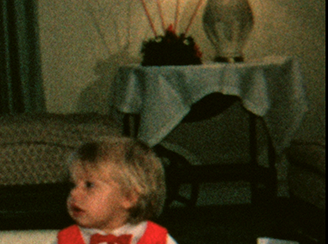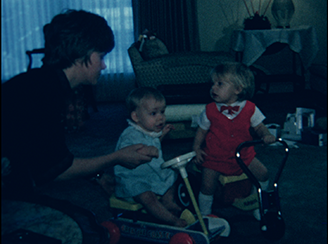
Pro Hollywood Restoration Danbury
We offer 3 restoration options. Color Correction, Grain Elimination and Stabilization Technology.
About 90% of our Danbury customers want the color correction and about 75% do the grain elimination. We do also offer image stabilization. It adds a nice touch to those old home movies.
Color correction is very important for amateur film because we will be able to recover more footage that was shot too dark or has darkened as part of the aging process. The scanner monitors the light and color balance and will change it based on pre-determined algorithms. This means it will pump more light through film that is dark and it will back off on film that is too bright. This will allow us to recover footage that would normally be too dark or too light. In addition, after the scan, an editor will go through the footage looking at skin tone and things like the color of the sky to order to make sure it looks correct. You can see in the examples below how much better the images look with our 2 pass color correction.
Grain is on all film. Look at the "Before" picture below compared to the "After" picture. These little dots muddy up the image and take away from the content you care most about. Now, look at the After picture on the right. This is what you really want to see. We do recommend Grain Elimination on all film for our Danbury customers.
Most amateur films have some stabilization issues just because of the way the film was shot. But, most people are used to seeing this on old movie film (See example video clip below). So, we see stabilization as a nice to have but not required. If you can afford to do it then we would recommend it. If it pushes you outside your budget then we would just recommend the Grain Elimination technology.
Super 8 Film Examples Danbury
|
|
Before |
After |
|
|
|
|
Before |
After |
16mm Film Examples
|
|
Before |
After |
|
|
|
|
16mm Before |
16mm After |
Danbury Fun Facts: By the time of Danbury's incorporation in 1889, the city's hat output was numbering in the millions annually. A combination of labor disputes, financial reversals, and changing fashion caused a dramatic turnaround in the 20th century, resulting in many factories ceasing operations or moving elsewhere. By the middle part of the 20th century, the hatting industry had virtually disappeared from the city but its influence is still felt in many ways today. A derby hat is depicted within the city seal and many of the city's exhibits and attractions relate to its once most-prominent industry.
Connecticut Fun Facts: In area it is the third smallest U.S. state, but it ranks among the most densely populated. The state’s greatest east-west length is about 110 miles, and its maximum north-south extent is about 70 miles. Connecticut takes its name from an Algonquian word meaning “land on the long tidal river.” “Nutmeg State,” “Constitution State” and “Land of Steady Habits” are all nicknames that have been applied to Connecticut.













